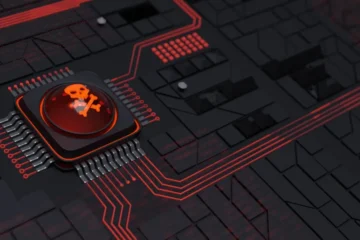Table of Contents
The Art of Hacking: Exploring Ethical Hacking and Penetration Testing

Hacking has long been associated with negative connotations, often linked to malicious activities and data breaches. However, ethical hacking and penetration testing provide a different perspective, serving as vital tools for securing systems, identifying vulnerabilities, and ensuring robust cybersecurity measures. In this informative and descriptive blog post, we will delve into the world of ethical hacking and penetration testing, exploring their significance, methodologies, and the role they play in preserving digital assets and protecting against cyber dangers.
Understanding Ethical Hacking
Ethical hacking, also known as white-hat hacking, refers to authorized attempts to identify security weaknesses in computer systems and networks. Ethical hackers, also known as penetration testers, employ their skills and knowledge to simulate real-world attacks in a controlled environment. Their goal is to identify vulnerabilities before malicious actors can exploit them. Ethical hackers work closely with organizations to strengthen their security posture and protect sensitive information.
The Role of Penetration Testing
Penetration testing is a systematic approach to evaluating the security of a system or network. It involves simulating real-world attacks to uncover weaknesses, validate existing security controls, and provide recommendations for improvement. Penetration testing goes beyond vulnerability scanning by actively exploiting identified vulnerabilities and assessing the impact on the target system. By mimicking the tactics, techniques, and procedures of real attackers, penetration testing helps organizations identify and address potential security gaps proactively.
Methodologies and Techniques
Ethical hacking and penetration testing employ a range of methodologies and techniques to assess the security of systems:
Reconnaissance: During this phase, information on the target system or network is gathered. Ethical hackers use various techniques, such as open-source intelligence (OSINT) gathering and network scanning, to gain insights into potential vulnerabilities.
Vulnerability Assessment: In this phase, vulnerabilities in the target system are identified using automated scanning tools, manual inspection, and configuration reviews. This step helps pinpoint potential entry points for exploitation.
Exploitation: Ethical hackers attempt to exploit identified vulnerabilities to gain unauthorized access or perform malicious activities. However, in the case of ethical hacking, the aim is to demonstrate the impact of the vulnerabilities rather than cause harm.
Post-Exploitation: Once a system is compromised, ethical hackers assess the extent of the access gained and evaluate the potential damage that could be caused. This step helps organizations understand the consequences of successful attacks and take appropriate mitigation measures.
Reporting and Recommendations: Ethical hackers provide detailed reports outlining the vulnerabilities discovered, the steps taken during testing, and recommendations for remediation. These reports serve as valuable insights for organizations to strengthen their security defenses.
Importance of Ethical Hacking and Penetration Testing
Ethical hacking and penetration testing play a crucial role in ensuring the security and integrity of digital assets:
Identifying Vulnerabilities: By actively searching for vulnerabilities, ethical hackers help organizations identify weak points in their systems and networks. This allows for timely patching and implementation of security measures, reducing the risk of exploitation by malicious actors.
Proactive Security Measures: Regular penetration testing helps organizations stay ahead of potential threats. By proactively identifying and addressing vulnerabilities, organizations can enhance their security posture and mitigate the risk of data breaches and cyber attacks.
Compliance and Regulations: Many industries are subject to compliance requirements and regulations that necessitate robust security measures. Ethical hacking and penetration testing can help organizations meet these obligations by identifying and addressing security gaps.
Building Trust and Reputation: A strong commitment to cybersecurity, demonstrated through regular testing and proactive measures, enhances customer trust and reputation. Organizations that prioritize the security of their systems are more likely to instill confidence in their stakeholders.
Conclusion
Ethical hacking and penetration testing are vital components of a comprehensive cybersecurity strategy. By simulating real-world attacks, organizations can proactively identify vulnerabilities, strengthen their security defenses, and protect their digital assets from malicious actors. The ongoing efforts of ethical hackers and penetration testers contribute to a safer digital environment, ensuring that systems and networks remain resilient against evolving cyber threats.



